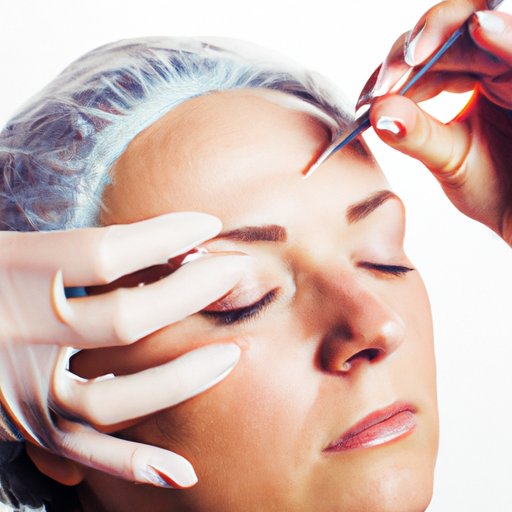
Qualifying for Eyelid Surgery: A Comprehensive Guide
Eyelid surgery, also known as blepharoplasty, is a cosmetic procedure that involves removing excess skin and fat from the eyelids to improve their appearance. Many people consider eyelid surgery to achieve a younger and fresher look or to correct drooping eyelids that can affect vision. However, not everyone is a suitable candidate for this procedure, and certain qualifications must be met. In this article, we will discuss the different types of eyelid surgery, physical and medical conditions that may qualify someone for eyelid surgery, the steps involved in the qualification process, lifestyle changes required before undergoing surgery, the importance of choosing a qualified surgeon, and how to prepare for eyelid surgery.
Different Types of Eyelid Surgery
Before qualifying for eyelid surgery, it is essential to understand the different types of surgery available. Upper eyelid surgery involves removing excess skin and fat from the upper eyelids to improve the appearance and reduce the heaviness of the eyelids. Lower eyelid surgery, on the other hand, targets the bags under the eyes and softens wrinkles or crow’s feet that have appeared with age. Moreover, some patients may require a combination of both procedures for optimal results. Therefore, it is crucial to meet with a qualified surgeon to determine the most appropriate type of eyelid surgery required for your specific condition.
Physical and Medical Conditions that May Qualify for Eyelid Surgery
Several physical and medical conditions may qualify someone for eyelid surgery, including droopy eyelids, excess skin, and bags under the eyes. Moreover, if heavy, sagging eyelids are obstructing vision, eyelid surgery can be medically necessary. Additionally, those with hereditary traits, such as bulging eyes or eye bags, may also be good candidates. Age and ethnicity can also be contributing factors, as some individuals with thinner skin around their eyes will exhibit more noticeable signs of aging. Overall, the ideal candidate is someone in good health with realistic expectations and who has a clear understanding of the surgery’s potential risks and limitations.
Steps Involved in Qualification Process
The qualification process for eyelid surgery involves several steps. The first and most crucial step is to schedule a consultation with a licensed and board-certified plastic surgeon who specializes in blepharoplasty. During this consultation, the surgeon will ask about your medical history and examine your eyes to determine if you are a suitable candidate. Additionally, they will outline the specific steps required for the procedure and provide an overview of the expected recovery process in detail. It is also likely that the surgeon will conduct various medical tests to ensure the patient’s safety before undergoing the surgery.
Lifestyle Changes for Qualifying for Eyelid Surgery
Undergoing eyelid surgery requires making various lifestyle changes before the procedure to minimize the risk factors and achieve optimal results. Smoking, for example, is a common risk factor that can lead to complications during and after surgery. Therefore, patients are advised to quit smoking at least four weeks before undergoing surgery. Additionally, patients should avoid certain medications that can increase internal bleeding, such as aspirin and nonsteroidal anti-inflammatory drugs (NSAIDs), for several weeks before the procedure. Patients should also adopt healthy lifestyle habits such as eating a balanced diet and engaging in physical activity to ensure proper and safe recovery from the procedure.
Choosing a Qualified Surgeon
An essential factor in qualifying for eyelid surgery is finding the right surgeon. It is vital to conduct thorough research to find a skilled and experienced surgeon who specializes in blepharoplasty and who can provide certification and proof of prior successful surgeries. Additionally, the surgeon’s bedside manner should be taken into consideration, and patients should not be afraid to ask questions during consultations to ensure that they understand the procedure fully. Ultimately, the surgeon’s experience, bedside manner, and successful track record are critical considerations when choosing a doctor.
Preparing for Eyelid Surgery
After qualifying for eyelid surgery, a specific preparation process must be undertaken to ensure the most optimal results and minimize the risks of complications. Patients should stop taking certain medications and dietary supplements that can lead to excessive bleeding, such as aspirin, herbal supplements, and vitamin E. It is also essential to eat healthy foods and avoid alcohol in the weeks leading up to the surgery to prepare your body for the operation. During the recovery period, it is crucial to follow all post-surgical instructions, including monitoring any changes in the eyes and avoiding activities such as heavy lifting or strenuous exercise that can lead to complications.
Conclusion
Qualifying for eyelid surgery requires understanding the different types of surgery available, physical and medical conditions that can lead to candidacy, the steps involved in the qualification process, the importance of making lifestyle changes before surgery, choosing a qualified surgeon with experience and excellent bedside manner, and preparing for the procedure and recovery process. With the right surgeon and preparation process, eyelid surgery can lead to successful results and a younger, fresher-looking appearance. So, if you are considering eyelid surgery, take the first step and schedule a consultation with a board-certified and qualified plastic surgeon today for more personalized and informative advice on qualifying for eyelid surgery.





